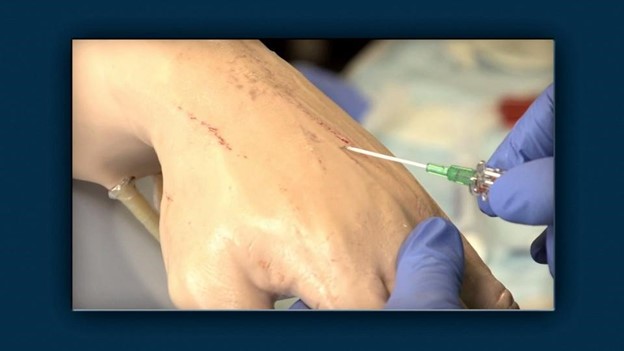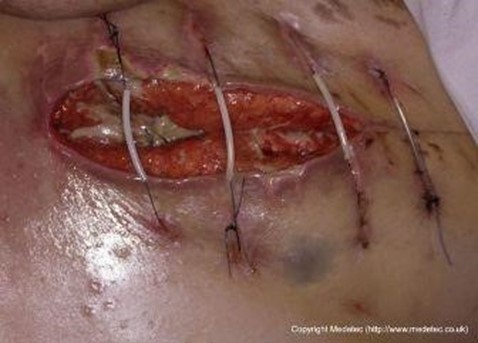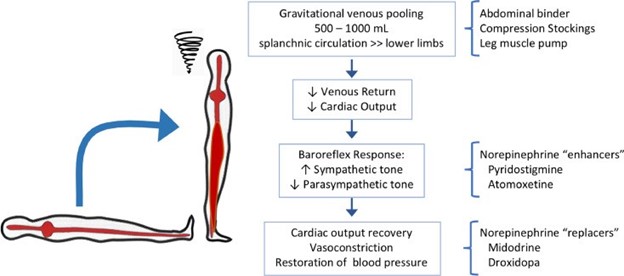A nurse is caring for a client who has a prescription for a peripheral IV catheter.
After puncturing the skin with the vascular access device and noting a blood return in the flashback chamber, which of the following actions should the nurse perform next?
Flush the catheter with saline
Retract the stylet
Release the tourniquet
Advance the catheter into the vein
The Correct Answer is D

This is because after puncturing the skin and the vein, the nurse needs to advance the catheter into the vein with the finger hub to ensure proper placement and prevent complications such as infiltration or phlebitis.
Choice A is wrong because flushing the catheter with saline should be done after securing the catheter to the skin with a transparent dressing and attaching a primed piece of extension tubing to the catheter.
Choice B is wrong because retracting the stylet should be done after advancing the catheter into the vein and releasing the tourniquet from the client’s arm.
Choice C is wrong because releasing the tourniquet should be done after advancing the catheter into the vein and before retracting the stylet.
Nursing Test Bank
Naxlex Comprehensive Predictor Exams
Related Questions
Correct Answer is C
Explanation

Wound dehiscence can lead to infection, bleeding, and evisceration (protrusion of internal organs through the incision). The nurse should report this finding to the provider immediately and cover the wound with a sterile dressing moistened with sterile saline solution.
Choice A is wrong because mild swelling under the sutures near the incisional line is a normal finding in the early stages of wound healing. It does not indicate infection or dehiscence unless accompanied by other signs such as redness, warmth, pain, or purulent drainage.
Choice B is wrong because crusting of exudate on the incisional line is also a normal finding that indicates the formation of a scab.
A scab protects the wound from infection and helps it heal faster. The nurse should not remove the scab unless instructed by the provider.
Choice D is wrong because pink-tinged coloration on the incisional line is another normal finding that shows healthy granulation tissue.
Granulation tissue is new tissue that fills in the wound and helps it close. It is usually pink or red and moist.
The nurse should follow these general tips for postoperative abdominal incision care:
- Always wash your hands before and after touching your incisions.
- Inspect your incisions and wounds every day for signs your healthcare provider has told you are red flags or concerning.
- Look for any bleeding.
If the incisions start to bleed, apply direct and constant pressure to the incisions.
- Avoid wearing tight clothing that might rub on your incisions.
- Try not to scratch any itchy wounds.
- You can shower starting 48 hours after your operation but no scrubbing or soaking of the abdominal wounds in a tub.
- After the initial dressing from the operating room is removed, you can leave the wound open to air unless there is drainage or you feel more comfortable with soft gauze covering the wound.
- Surgical glue (Indermil) will fall off over a period of up to 2-3 weeks.
Do not put any topical ointments or lotions on the incisions.
- Do not rub over the incisions with a washcloth or towel.
- No tub baths, hot tubs, or swimming until evaluated at your clinic appointment.
Correct Answer is C
Explanation

Whether you are a student looking to ace your exams or a practicing nurse seeking to enhance your expertise , our nursing education contents will empower you with the confidence and competence to make a difference in the lives of patients and become a respected leader in the healthcare field.
Visit Naxlex, invest in your future and unlock endless possibilities with our unparalleled nursing education contents today
Report Wrong Answer on the Current Question
Do you disagree with the answer? If yes, what is your expected answer? Explain.
Kindly be descriptive with the issue you are facing.
